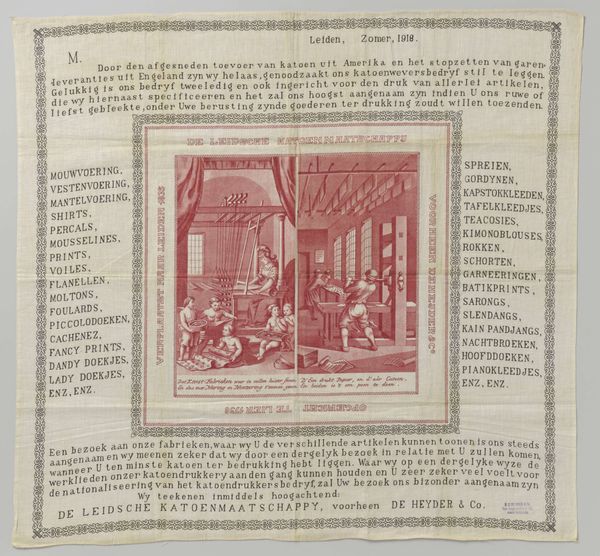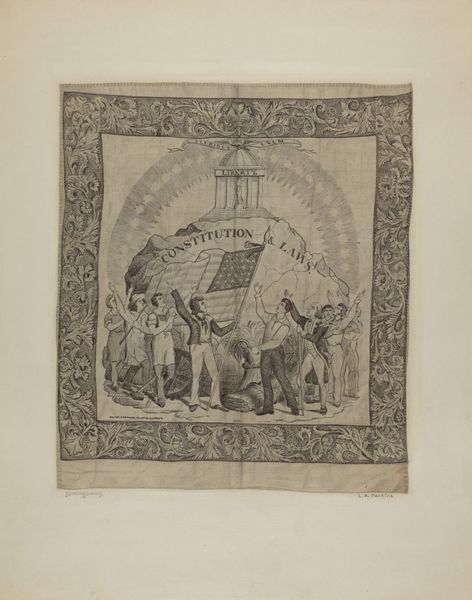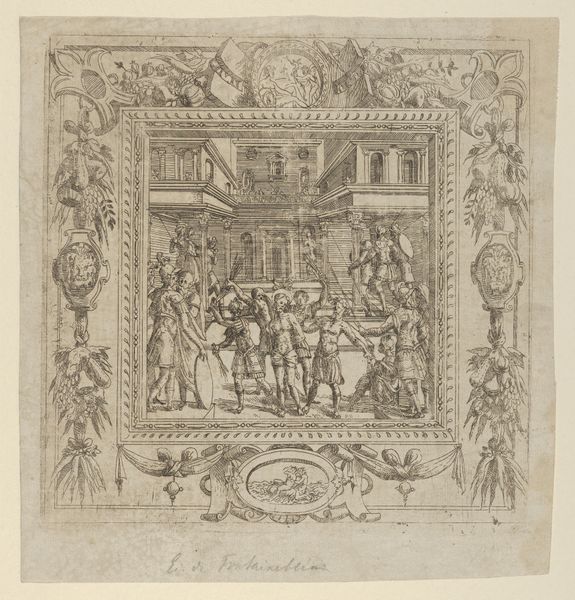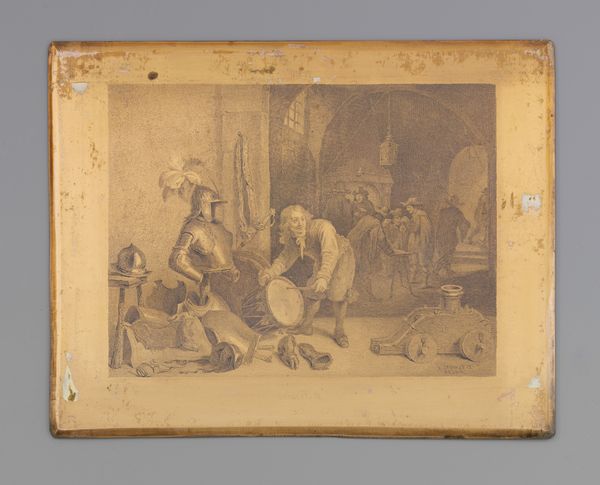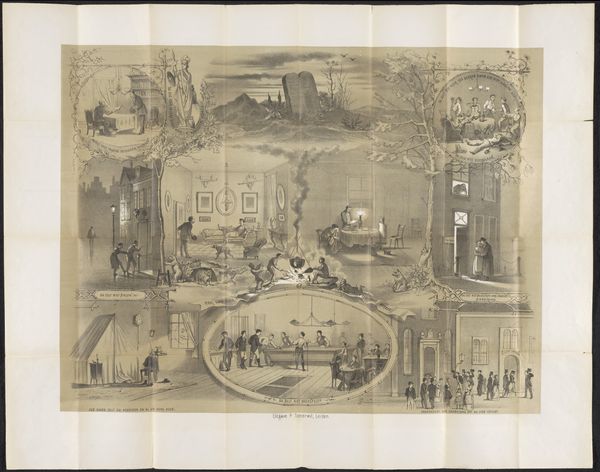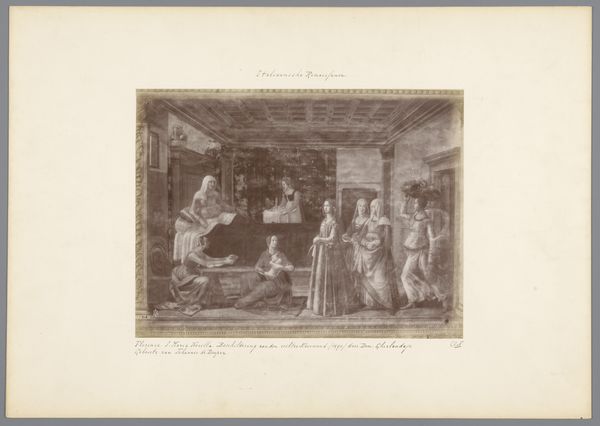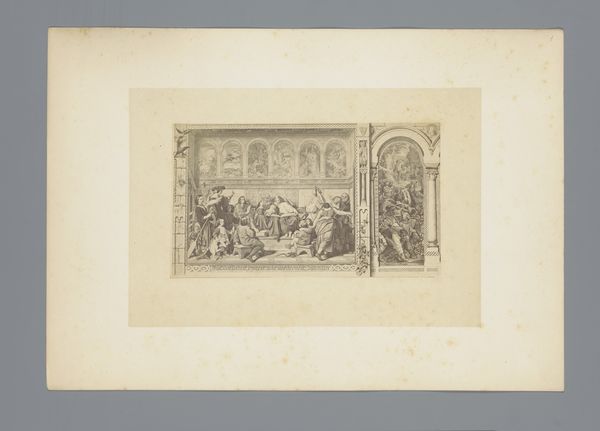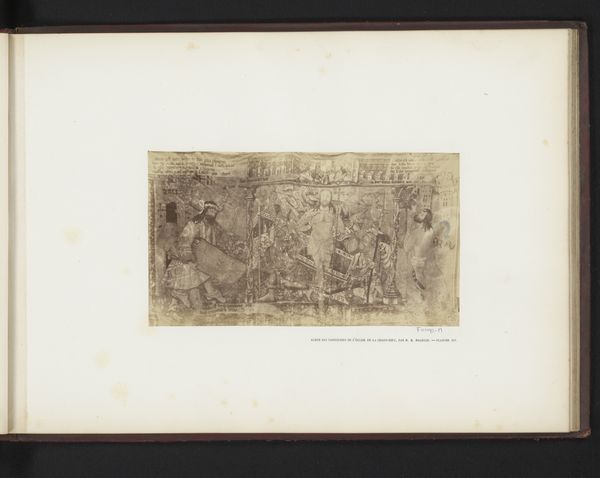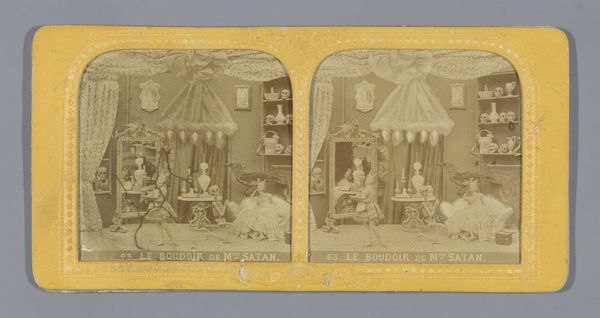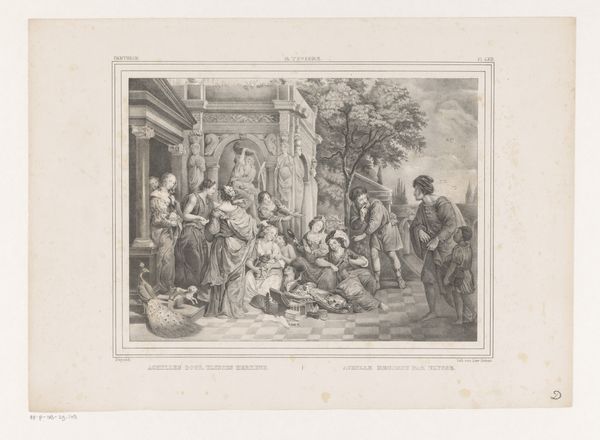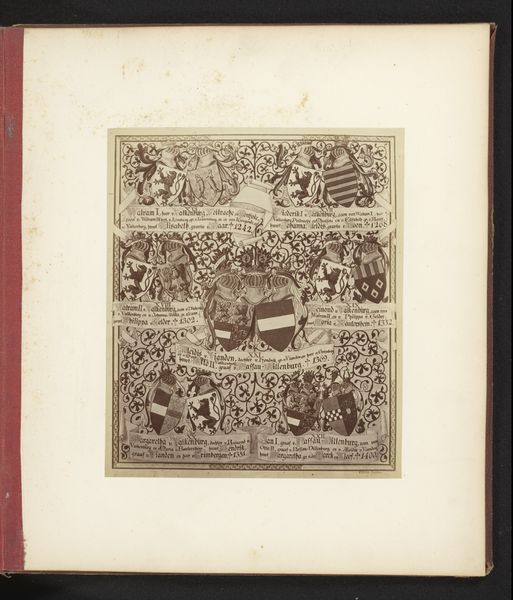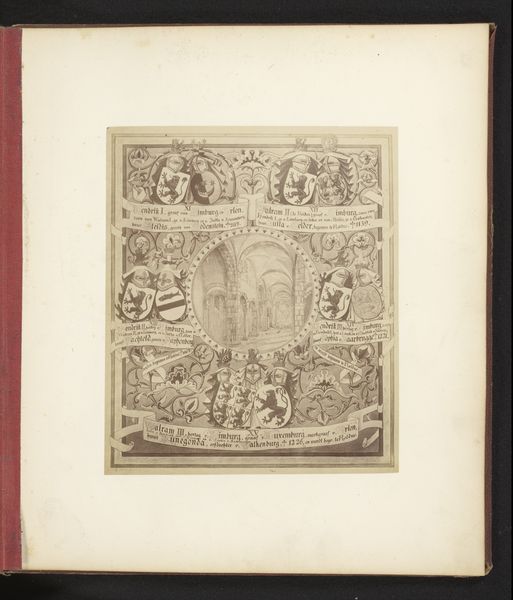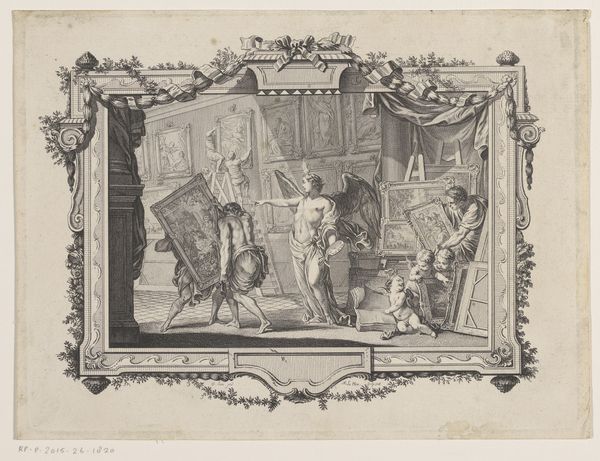
print, textile, engraving
# print
#
landscape
#
textile
#
genre-painting
#
engraving
Dimensions: height 830 mm, width 940 mm
Copyright: Rijks Museum: Open Domain
Editor: Here we have a commemorative cloth from the Leiden Cotton Company, dating roughly between 1870 and 1900. It’s a printed textile with an engraved scene in the center surrounded by decorative borders. I’m struck by the way it merges fine art, like engraving, with something functional. What’s your take on this piece? Curator: The merging of “fine art” and utility is precisely where I’d start. Look closely at the textile itself. Consider its material properties. Cotton was central to industrial capitalism. This object, therefore, represents not just aesthetics but the socio-economic realities of textile production. Editor: So, you're saying the material tells a story about industrial labor? Curator: Absolutely. The image depicts laborers engaged in various stages of textile manufacture, right? By framing the company's output – finished cloth, design, even historical location—in the form of commemorative textile art, the factory owns an ideal for the consumption practices and value assigned to these commemorative items. Editor: That makes a lot of sense. So, it’s not just a pretty picture on fabric; it’s also about the company controlling the narrative around its labor. I hadn't considered how deliberate the choice of textile would be. Curator: Precisely. What are some contemporary objects where you might expect something similar? How about concert merch shirts that reference the location, album, or band performance itself? They create a kind of souvenir-making practice of ownership of memory, emotion, or performance, that can then be traded or sold in marketplaces as commodities. Editor: Fascinating! I'll definitely look at textiles differently from now on. It really highlights the story embedded within everyday objects. Curator: Exactly, now consider how modern industrial factory outputs function as a material-specific form of artistic legacy, a narrative built into the fabric of society.
Comments
No comments
Be the first to comment and join the conversation on the ultimate creative platform.
